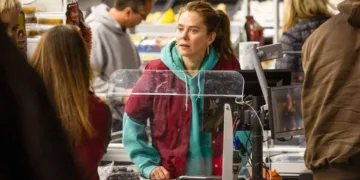A coalition of over 100 independent film and television bodies has issued an urgent appeal to governments and regulators worldwide, warning that U.S. President Donald Trump’s proposed 100 percent tariff on foreign-made movies risks upending a global production network that sustains indie creators. Published on the eve of the Cannes Film Festival, the declaration—titled “Our Stories, our Voices: A Global Declaration for Artistic Freedom, Cultural Diversity and Cultural Sovereignty”—calls on officials to uphold existing content-spending rules and screen quotas that support local filmmaking.
Signatory organisations span Europe, Africa and North America. They include the European Producers Club, Irish Equity, South Africa’s Independent Directors Association and Canada’s Alliance des producteurs francophones du Canada. In their statement, members argue that Trump’s plan targets essential protections such as the European Union’s Audiovisual Media Services Directive (AVMS), Australia’s local content obligations, Asian screen quotas and Canada’s streaming-service contribution requirements. “We reject any action that would shred the regulatory framework preserving our creative ecosystems,” they wrote.
In March, before the tariff announcement, the Motion Picture Association—representing Disney, Netflix, Paramount, Amazon Prime/MGM, Sony Pictures, Universal and Warner Bros.—sent a memorandum to the U.S. Trade Representative. The memo complained of “disproportionate investment obligations” in France, Germany and Italy, where services must allocate a fixed percentage of revenue to domestic productions. Now, under Trump’s proposal, a $200 million film shot in Australia could face an additional $200 million duty when imported into the U.S., effectively doubling distribution costs for projects commissioned outside America.
Industry insiders note that Trump has not specified where duties would be collected—at the customs desk, the box office or some other point. Yet the measure’s goal is clear: to compel studios to repatriate production. That outcome would clash with the real-world migration of shoots to regions offering generous rebates and streamlined approvals. FilmLA, a nonprofit tracking Los Angeles production, reports that studio-backed filming there has dropped 30 percent over the past year and 50 percent compared with the prior five-year average. Crew relocations to Budapest, Belgrade, Vancouver and Wellington have become routine.
Australia’s federal rebate alone grants up to 30 percent of qualifying local spend, stacking atop state and municipal incentives. In Canada, provinces such as British Columbia and Ontario offer combined credits of 35 to 45 percent. European nations deploy their own systems: Lithuania entices productions with rebates up to 30 percent; the Czech Republic offers up to 25 percent. Such programs have drawn blockbusters like Spider-Man: No Way Home, The Crown and the latest Fast & Furious franchise entries.
Los Angeles, by contrast, has capped its tax credit program at $330 million annually, dispersed across dozens of projects. New York’s cap sits at $420 million. State bureaucracies enforce environmental reviews and limit shoot hours in noise-sensitive zones, often delaying principal photography. L.A. traffic snarls and high living costs compound the disincentives: crews spend hours commuting, while studio executives hover over every detail from craft-services menus to parking permits.
At a May 6 hearing before the USTR, independent producer Maria Grant testified that indie filmmakers rely on co-production treaties, regional broadcasters and festival circuits to finance and distribute their work. “Micro-budget dramas and documentaries can’t absorb a sudden doubling of import fees,” she said. “Tariffs would shut out vital platforms that connect cultural voices to audiences.” Her comments underscore that smaller projects lack deep pockets; unlike major franchises, they cannot shift funds to cover punitive duties.
EU Culture Commissioner Elisa van den Bolck emphasized the AVMS Directive’s role in fostering pan-European collaboration. “Our quotas safeguard language-minority productions in dozens of regions,” she told reporters. “Weakening them would trigger legal challenges that unravel decades of harmonisation.” The directive requires broadcasters and VOD services to reserve at least 30 percent of their catalogs for European works, and obliges streaming giants to invest at least 20 percent of revenues into local content.
In Ottawa, Canadian Heritage Minister Steven Levesque warned that Canada’s federal and provincial credits support roughly 185,000 jobs and generate $15 billion in economic activity each year. “A tariff that penalises our export industry would devastate communities from Vancouver to Halifax,” he said. Australia’s Minister for the Arts, Rebecca Hale, echoed the concern: “We have built a world-class production sector. Removing its competitive edge would cost thousands of jobs and shutter facilities.”
Studios argue that high-end visual-effects work, post-production and scoring have already dispersed globally. London, Vancouver, Mumbai and Munich are major hubs for VFX houses; composers in Paris and Berlin supply orchestral scores for tentpoles. Trump’s import duty would not recapture those services for U.S. firms, only discourage location shoots. “Driving production back stateside won’t restore service jobs that have migrated over the last decade,” said Thomas Elliott of the Visual Effects Society.
Major unions—SAG-AFTRA and the Directors Guild of America—have seen membership growth stall amid lean budgets and shorter shooting schedules. Union leaders suggest domestic projects might secure higher wages if more filming takes place locally. Still, they concede that the cost gap posed by overseas incentives is too wide to erase with additional credits. At present rates, U.S. programs fall short of matching European and Australasian packages.
During a panel discussion in Cannes, producer Jacques Dupont noted that indie items filmed abroad often premiere at festivals and secure distribution deals precisely because they reflect authentic settings. “You can replicate a Paris street on a Hollywood backlot, but you’ll miss the texture captured when you shoot in real arrondissements,” he said. His remarks highlight the creative value of international shoots, which feed into cultural diplomacy and soft-power objectives.
Analysts at Global Film Analytics predict that if the tariff moves forward, studios will reclassify more work as “service exports” to shield them from duties. Contracts might label location shoots as foreign services, billing them to overseas branches. Lobbyists in Washington are exploring such workarounds, arguing that they comply with WTO rules on service trade. Yet the USTR has signalled it will scrutinise any effort to skirt the spirit of the tariff.
Meanwhile, several European parliaments are considering motions to retaliate with duties or digital levies on U.S. streaming revenues. French senators have drafted amendments that would impose a levy on Netflix and Amazon Prime profits, directing proceeds to national film development funds. German lawmakers are debating a surcharge on Hollywood’s local box-office receipts to support regional co-productions. Such measures—if enacted—would escalate the dispute beyond tariffs on physical prints.
Industry organizations have called on major film festivals, broadcasters and streaming services to declare solidarity. At Cannes, jurors and filmmakers may face questions on whether they support the declaration. Observers expect statements from Cannes président Pierre Leclerc and festival director Amal Ruszka on the impact of trade policy on artistic expression. Their comments will carry weight, as Cannes is both a market and a showcase for emerging talent.
In Washington, bipartisan lawmakers have expressed scepticism. Senator Jane Hunt (R-CA) cautioned that punishing overseas shoots could undermine America’s leadership in entertainment exports, which last year accounted for $30 billion in revenue. Representative Luis Martinez (D-NY) argued that cultural exchange strengthens diplomatic ties. Their letters to the USTR request a full economic impact study before the tariff proceeds.
As stakeholders from five continents convene in Cannes, the fate of Trump’s film tariff proposal hangs in the balance. Officials in Brussels, Canberra, Ottawa and Washington must weigh trade objectives against the economic and creative ecosystems that thrive on cross-border collaboration. The declaration by indie bodies signals that any move to penalise foreign production will meet fierce resistance from a sector that drives thousands of jobs and fuels cultural exchange at every level.
















































